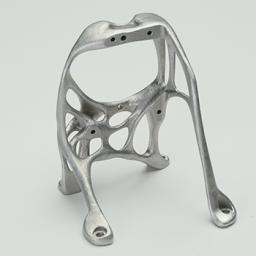 3D Systems
3D Systems has
upgraded their product line to include a metal 3D printer capable of using a itanium, stainless steel, and nickel super alloy to
product three dimensional objects. This is a big step forward in 3D printing up from printing with plastic materials. There have been some bumps in the way with the introduction of this technology with the merging of Phenix Systems and a class action lawsuit. 3D Systems have worked with another company, Planetary Resources, to
produce 3D sculptures using meteorites. Decades ago it was said that we wouldn't have a computer in every house, yet today we have many. How long until 3D printers are a normal appliance to buy for a house alongside the fridge and oven?
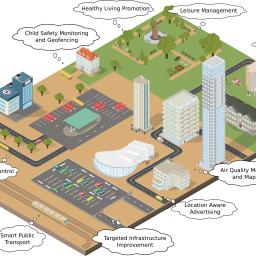 The problem with the Internet of Things
The problem with the Internet of Things is that few people truly understand what it is really about.
A large percentage of people who do understand it tend to discard it as yet another marketing hype such as "the cloud" with very little real substance. Due to all kinds of news reports on security issues, vendor lock-ins and lack of open standards, cost overruns, etc. these people tend to see their opinions confirmed.
We also tend to agree with this group - to a point. The reason we do is that we see the same mistakes being made as countless numbers of times before. However, we do see the great potential of internet connected devices. Probably not the refrigerators and such, but closer to the origins of the Internet of Things: machine to machine, also known as M2M.
A Fitbit device has
detected a pregnancy before the expectant mother knew. The couple posted a question online that the device was reporting an unusual heart rate reading asking for a way to recalibrate the device or for a replacement. A standard test showed that the woman was two months pregnant.
Great. Can they detect lying too? Can Fitbit results be subpoenaed and used against their owner? How long until we all have devices like these and only weird people don't know their current heart rate and daily calorie burn rate?
In defiance of the rage of the security community who see the advances of spyware and intrusiveness endangering our precious private lives and anonymity Samsung have mated a mobile phone and a fridge to produce a device
dedicated to supplying food and spying on you. Samsung showed models of this impressive privacy intruding device at the recent CES demonstrating how the 'Tizen' software could add a whole new dimension to invading our privacy in our own homes. Mike Lilly from Samsung Electronics Australia was quoted as saying this was "meaningful innovation" adding "We've seen internet fridges out there in the past but this is actually useful", meaning that it is useful for recording information about eating and spending habits to a degree higher than currently available even compared to mobile phone apps. Samsung plan launch the fridge in July quoting "it's important to get it into a lot of homes". Scary.
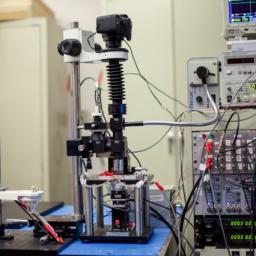
State-of-the-art atomic force microscopes (AFMs) are designed to capture images of structures as small as a fraction of a nanometer - a million times smaller than the width of a human hair. Atomic force microscopes typically scan samples using an ultrafine probe, or needle, that skims along the surface of a sample, tracing its topography, similarly to how a blind person reads Braille.
http://news.mit.edu/2015/new-microscope-real-time-videos-nanoscale-1214On the top floor of an old brick building in the heart of Berlin, a group of journalists and tech enthusiasts are working to spur the Syrian media revolution. Their weapon is an unassuming black case the size of a shoebox that allows opposition radio stations in Syria to transmit inside hostile territory. Dubbed PocketFM, the device is basically a low-powered radio transmitter. Coupled with a satellite dish to receive new programs, a car battery for power and a one-meter (three-foot) antenna, it can broadcast FM radio within a 5-kilometer (3-mile) radius. That's enough to cover a town or a city district, said Philipp Hochleichter, who oversees development of the device for the Berlin-based nonprofit organization Media in Cooperation and Transition.
The group has been training journalists in conflict zones for more than a decade and often relies on FM radio to reach populations in far-flung areas that don't have access to the Internet or smartphones. But when the group realized that shifting front lines and the brutal treatment of journalists meant operating large broadcast antennae could become too cumbersome or risky, it developed PocketFM. It's now being used to covertly broadcast in nine locations, including two that are controlled by the Islamic State group, said Hochleichter. Connected to a solar panel, a PocketFM transmitter can theoretically work autonomously for long periods of time.
http://www.voanews.com/content/berlin-group-makes-tiny-transmitters-for-syria/3113277.htmlThe polarization of light is the physical phenomenon behind polarized sunglasses and most 3-D movie systems. MIT researchers have shown that by exploiting the polarization of light they can increase the resolution of conventional 3-D imaging devices as much as 1,000 times. The technique could lead to high-quality 3-D cameras built into cellphones, and perhaps to the ability to snap a photo of an object and then use a 3-D printer to produce a replica. The work could also help the development of driverless cars. The researchers call this new system Polarized 3D.
http://news.mit.edu/2015/algorithms-boost-3-d-imaging-resolution-1000-times-1201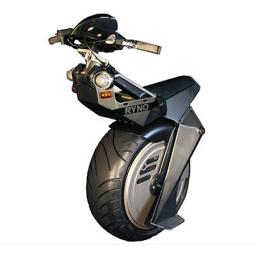
2015 has seen a spread of alternative powered vehicles released for personal transportation. Most of these are a variation on the powered unicycle:
* The
Ryno Electric Unicycle which is basically half a motorcycle for possibly around $3,500
*
Self Balancing Electric Unicycle Scooter such as the 'airwheel X3' for around $300 to $1,500
* Skateboards with
one huge wheel*
Two Wheel Self-Balancing Scooter for $500 to $1200
* and the
powered unicycle has been around for a while
* Powered skateboards like
this have also been around for a while
* with the
Caseboard making the powered skateboard that folds into a suitcase
We've seen
Monowheels before with more emphasis this year being seen on single wheel powered devices.
A basic hoverboard has been invented, but it only works on a specific surface, so we are still waiting for Marty McFly's hoverboard. So, these are our options for now and they can only get cheaper and better. In terms of personal transport options 2016 is looking good.
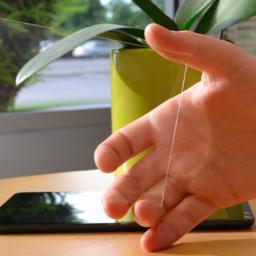
Research has boosted solar panel efficiency over time. But some scientists argue that to truly take advantage of the sun's power, we also need to expand the amount of real estate that can be outfitted with solar, by making cells that are nearly or entirely see-through, i-e transparent cells.
A Silicon Valley start-up named "Ubiquitous Energy" has succeeded in creating such transparent solar cells. ClearView is a transparent solar cell that can coat any surface, including displays and windows, to harvest ambient light and generate electricity. Ubiquitous Energy has redesigned the solar cell to selectively transmit light visible to the human eye while absorbing only the ultraviolet and infrared light and converting it into electricity.
Read more from...
That doesn't seem to mesh with their goal of completely eliminating the need for batteries in small consumer gadgets and even smart phones, as LED lighting doesn't emit ultraviolet or infrared, and there isn't always a window nearby. Still a potentially revolutionary technology in other applications, but unfortunately it's in the very, very early stages of development.
http://www.digitaltrends.com/cool-tech/ubiquitous-energy-transparent-solar-power-timeline/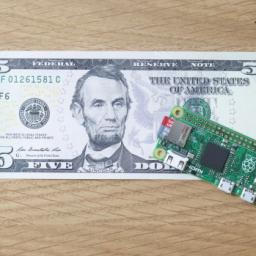
The original Raspberry Pi Model B and its successors put a programmable computer within reach of anyone with $20-35 to spend. Today, I'm pleased to announce the immediate availability of Raspberry Pi Zero, made in Wales and priced at just $5. Zero is a full-fledged member of the Raspberry Pi family, featuring:
A Broadcom BCM2835 application processor 1GHz ARM11 core (40% faster than Raspberry Pi 1)
512MB of LPDDR2 SDRAM
A micro-SD card slot
A mini-HDMI socket for 1080p60 video output
Micro-USB sockets for data and power
An unpopulated 40-pin GPIO header Identical pinout to Model A+/B+/2B
An unpopulated composite video header
Our smallest ever form factor, at 65mm x 30mm x 5mm
Raspberry Pi Zero runs Raspbian and all your favourite applications, including Scratch, Minecraft and Sonic Pi. It is available today in the UK from The Pi Hut and Pimoroni, and in the US from Adafruit and in-store at your local branch of Micro Center. We've built several tens of thousands of units so far, and are building more, but we expect demand to outstrip supply for the next little while.
You'll need a mini-HDMI and a micro-USB adapter/cable
Happy hacking!
https://www.raspberrypi.org/blog/raspberry-pi-zero/ 3D Systems has upgraded their product line to include a metal 3D printer capable of using a itanium, stainless steel, and nickel super alloy to product three dimensional objects. This is a big step forward in 3D printing up from printing with plastic materials. There have been some bumps in the way with the introduction of this technology with the merging of Phenix Systems and a class action lawsuit. 3D Systems have worked with another company, Planetary Resources, to produce 3D sculptures using meteorites. Decades ago it was said that we wouldn't have a computer in every house, yet today we have many. How long until 3D printers are a normal appliance to buy for a house alongside the fridge and oven?
3D Systems has upgraded their product line to include a metal 3D printer capable of using a itanium, stainless steel, and nickel super alloy to product three dimensional objects. This is a big step forward in 3D printing up from printing with plastic materials. There have been some bumps in the way with the introduction of this technology with the merging of Phenix Systems and a class action lawsuit. 3D Systems have worked with another company, Planetary Resources, to produce 3D sculptures using meteorites. Decades ago it was said that we wouldn't have a computer in every house, yet today we have many. How long until 3D printers are a normal appliance to buy for a house alongside the fridge and oven?



